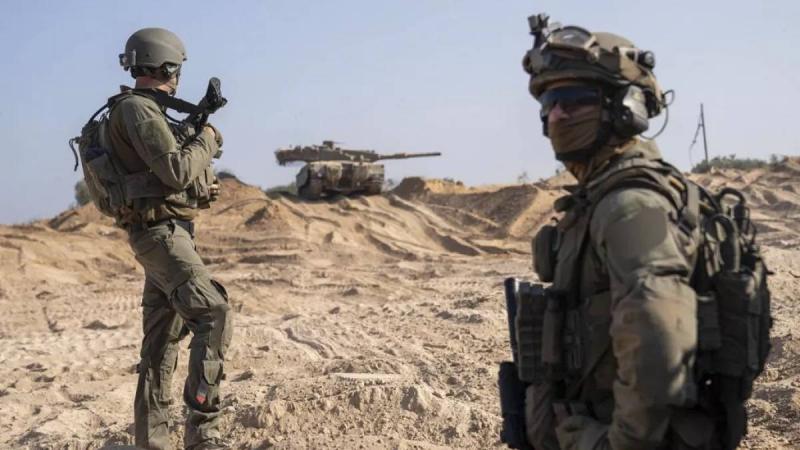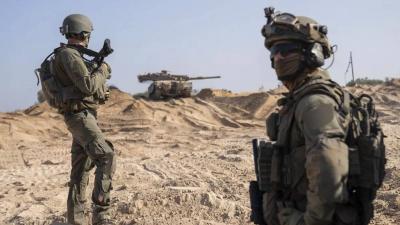The American newspaper "The New York Times" revealed what it described as "the stark reality of Israel's fight in Gaza" in a new report published on Monday. It clarified that Tel Aviv had failed to achieve its two primary objectives in the war: the complete recovery of hostages and the total destruction of Hamas.
The newspaper explained that Israeli military operations in Gaza weakened Hamas, as most of its brigades deteriorated, and thousands of its members were killed. However, it noted that Israel had not achieved its fundamental war goals, either in liberating the hostages or entirely destroying Hamas's political and military capabilities.
"The New York Times" quoted current and former American and Israeli officials stating that despite the heavy losses suffered by Hamas, a large part of its senior leadership remains within an extensive network of tunnels and operational centers underground in Gaza. Current and former American officials indicated that these tunnels will allow Hamas to persist and rebuild its capabilities once the fighting ceases.
Israel was unable to destroy the tunnels that Hamas had spent years constructing, although Israeli officials claimed to have eliminated most of the primary tunnels and strategic secret complexes used by Hamas to command its forces. An Israeli military intelligence official, who spoke on condition of anonymity, stated that about 70 percent of Hamas's strategic locations had been eliminated.
However, an intelligence assessment released in March raised doubts among American intelligence agencies regarding Israel's ability to completely destroy Hamas. The report stated, "Israel is likely to face armed resistance from Hamas for years to come, and the military will struggle to neutralize Hamas's secret infrastructure that allows these elements to hide, regain strength, and surprise Israeli forces."
As Israeli officials confirmed that the only way to eliminate four brigades of Hamas fighters in Rafah was through a ground operation in the city, American officials noted that Israel had not put a plan in place to evacuate the densely populated civilians there, a point of contention between the two countries.
Veterans of U.S. military wars argue that the number of Hamas members killed or the destruction of their command sites has proven to be "unrealistic and an extremely misleading measure" of success in a military campaign. The newspaper emphasized that "U.S. intelligence agencies surely estimate that Hamas has lost a significant amount of combat power and that rebuilding will take time," but this does not mean that Hamas has been completely destroyed. Israeli officials indicated that the movement and other armed groups still have many forces above and below ground, and that crushing Hamas could take years.
An Israeli military intelligence official noted that between 4,000 to 5,000 fighters remained in northern Gaza. American officials and analysts indicated that Hamas is likely to remain strong in Gaza even when the fighting ends, but the speed of rebuilding its capabilities will depend on Israel's decisions in the subsequent stages of the war and beyond.
Officials also mentioned that "Israel must declare victory over Hamas and transition to a different type of conflict targeting senior leaders of the movement without treating civilians brutally," especially since Tel Aviv had not completely destroyed Hamas, but has decreased the likelihood of a repeat of the October 7 attack.
Some Israeli officials claim that crushing Hamas may take years. Benny Gantz, a member of the Israeli security cabinet, told a group of Israelis in January that the war could last "a year, a decade, or a generation," according to someone who participated in the meeting.
American officials feel embarrassed by the implications that intensive Israeli operations could continue for another two months, let alone another two years. They assert that Israel needs to declare victory over Hamas and shift to a different kind of fight: one that targets senior Hamas leaders without treating civilians brutally; one that focuses on preventing Hamas from resupplying and rebuilding, instead of striking the remaining fighters.
American officials also consider it equally important to devise a plan to return governance of Gaza to the Palestinians. In the absence of Israel allowing an effective Palestinian government to take charge, chaos and lawlessness have prevailed with the withdrawal of Israeli forces from parts of Gaza.
Current and former Israeli and American officials noted that although Israel has not destroyed Hamas and cannot do so, it has increased the likelihood of repeating what occurred in October. Former Israeli military intelligence chief Amos Yadlin concurred, stating, "We have already achieved the most important thing: turning Hamas into an organized army capable of launching an attack in October." He added, "They cannot do that again."




